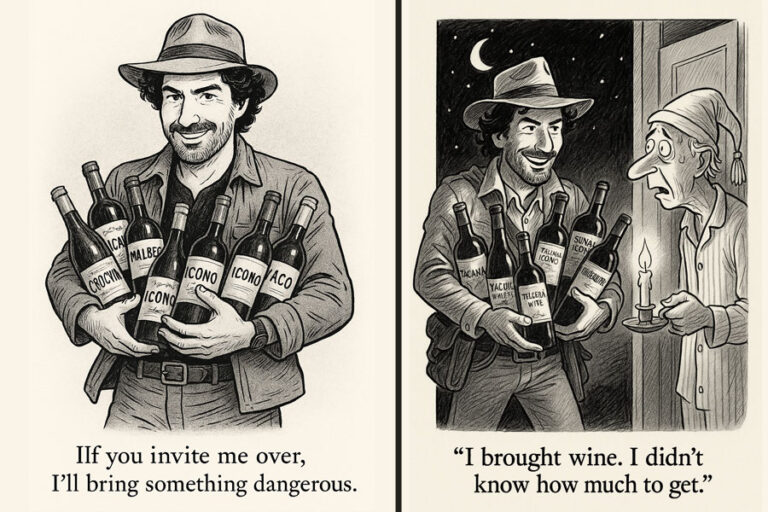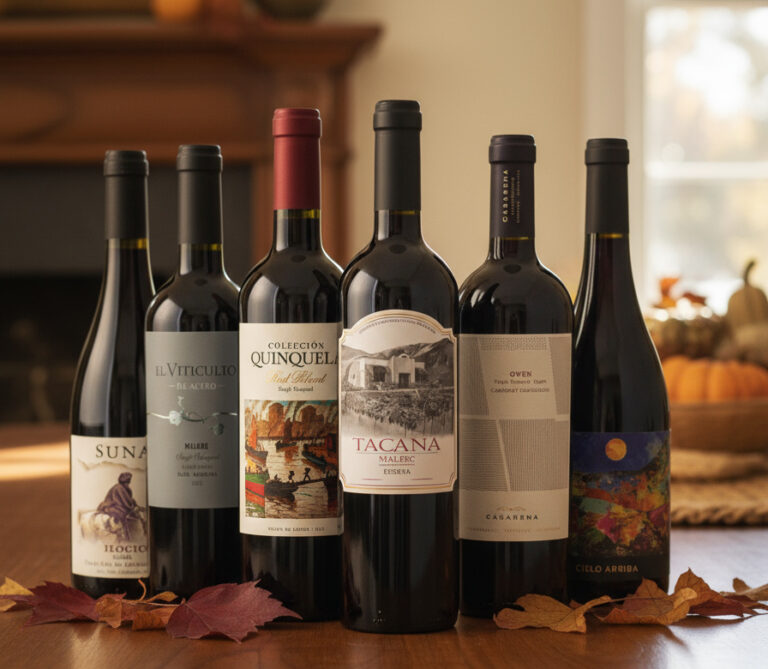[et_pb_section fb_built=”1″ _builder_version=”4.16″ _module_preset=”default” global_colors_info=”{}”][et_pb_row _builder_version=”4.16″ _module_preset=”default” global_colors_info=”{}”][et_pb_column type=”4_4″ _builder_version=”4.16″ _module_preset=”default” global_colors_info=”{}”][et_pb_video src=”https://youtu.be/jKZ5ANC7_k4″ _builder_version=”4.26.1″ _module_preset=”default” width=”75%” width_tablet=”85%” width_phone=”100%” width_last_edited=”on|phone” module_alignment=”center” global_colors_info=”{}”][/et_pb_video][et_pb_text _builder_version=”4.27.0″ _module_preset=”default” hover_enabled=”0″ global_colors_info=”{}” sticky_enabled=”0″]
Picking a wine can be daunting, especially if you’re trying something new. Each region has its own styles of wine, grape varieties, and unique rules for labeling…
Here’s a crash course in how to read a wine label, so you can know what you’re getting, every time.
Transcript:
00:00:00:00 – 00:00:36:17
Understanding a wine label can be a really daunting task for those new to the wonderful world of wine. There are so many colors, variety, information and styles. However, with a little knowledge, it can become a really valuable tool for selecting wines that suit your taste preferences and your budget. I’m your host, Julien, French, Bordeaux trained winemaker, and this is your guide to accurately reading the key elements of a wine label, helping you confidently navigate the vast array of options available.
00:00:36:18 – 00:00:59:12
We’re going to make all of you a wine expert in no time here, so stay tuned. While they whine, we wine.
00:00:59:14 – 00:01:15:07
There is essentially three ways wines are labeled by grape, by region, or by brand. So let’s go through how to read those.
00:01:15:09 – 00:01:39:17
One of the most important pieces of information on the wine is the grape variety. While this one doesn’t have a grape variety, but this one does. If the grape is not on the label, you may ask? Well, we’ll get to that in a second. The grape variety indicates the primary type of grape that was used to making for making the wine Cabernet Sauvignon, Malbec, Pinot Noir or Chardonnay.
00:01:39:19 – 00:02:07:02
Just a few examples of common grape varieties. Knowing the grape can give you a good idea of the wine’s flavor profile, as certain grapes are associated with specific characteristics. Fruity, explosive, restrained, fine, you name them. For instance, Cabernet Sauvignon is often described as having bold, tannic flavors. It’s big, wide. Pinot noir is known for its delicate, fruity notes.
00:02:07:04 – 00:02:28:17
If you’ve made it so far, please give us a like to support the channel and allow us to make more videos like this. Go ahead, go ahead. Give us a like. Okay. Thank you. What else can we gather from a wine label?
00:02:28:19 – 00:02:49:23
This to me, is a Spanish wine. It smells like one. Well, but there’s a better way to find out. The wines region of origin is another crucial element to consider. What we called the terroir, which is the combination of soil and climate and topography of the vineyard, can significantly influence the flavor and the character of the wine.
00:02:49:23 – 00:03:21:02
Wines from different regions will have different characteristics, even if they’re made from the same grape variety. A French Cabernet Sauvignon is not going to be the same as a Napa, California Cabernet Sauvignon. The French one will be arguably finer, but at least more savory, maybe a little harsher, where Napa will be sweeter and bigger. The appellation or designation of origin is another term that you may encounter on a wine label.
00:03:21:02 – 00:03:47:13
This indicates the specific geographical area where the grapes were grown. Appellation can range from broad, really big regions like California or even Napa Valley is pretty big, or like Bordeaux in France, which is big, to more specific as Pauillac or Saint-Emilion, which are smaller villages within the broader Bordeaux region. Here’s a video about Pauillac, for example, a small village in Bordeaux.
00:03:47:13 – 00:04:17:17
The appellation can provide valuable information about the wines quality and style, as certain regions are known for producing particular types of wines. European wines are usually labeled by region, like in France, in Spain, in Italy, pretty much everywhere they all give you only the appellation up to you. Then to learn or research what it’s made of. For example, Bordeaux wines are made from Cabernet Sauvignon and Merlot usually blended together.
00:04:17:19 – 00:04:30:09
The best way to learn about all of those details is to subscribe to our channel.
00:04:30:11 – 00:04:56:09
Now, of course, the vintage or the year is also an important factor that is usually indicated on a wine label. Vintage refers to the year the grapes were harvested, produced, and harvested. While not all wines are vintage dated, particularly if those from bulk production may not be the vintage, they can provide clues about the quality and style of the wine too.
00:04:56:09 – 00:05:20:15
In general, good vintages produce wines with high quality and complexity. However, it’s important to note that vintage quality can vary depending on the region and specific growing conditions as well. It may be rainy one year in Italy, not in France. Watch this video here to learn more about wine aging. Because as wine ages well, it changes flavors and all sorts of things.
00:05:20:15 – 00:05:47:09
In addition to these key elements, wine labels may also include information about the producer, the winery, the alcohol content. It’s pretty much always there, and many special designations or awards. This information can be really helpful in making informed choices, but it’s important to remember that the most important factors are the grape variety, the region, and the vintage. And that’s it for me, for the basics.
00:05:47:09 – 00:06:09:09
Now, at least you know there’s more to learn about wine and you found the right channel for this. Watch those videos here to continue learning more. This one is particularly great and details the nine main wine styles that you need to know about in very simple terms as usual, and this one is to learn how to taste wine like a pro.
00:06:09:11 – 00:06:19:00
Stay tuned. See you soon! Cheers! Santé.
[/et_pb_text][/et_pb_column][/et_pb_row][/et_pb_section]



